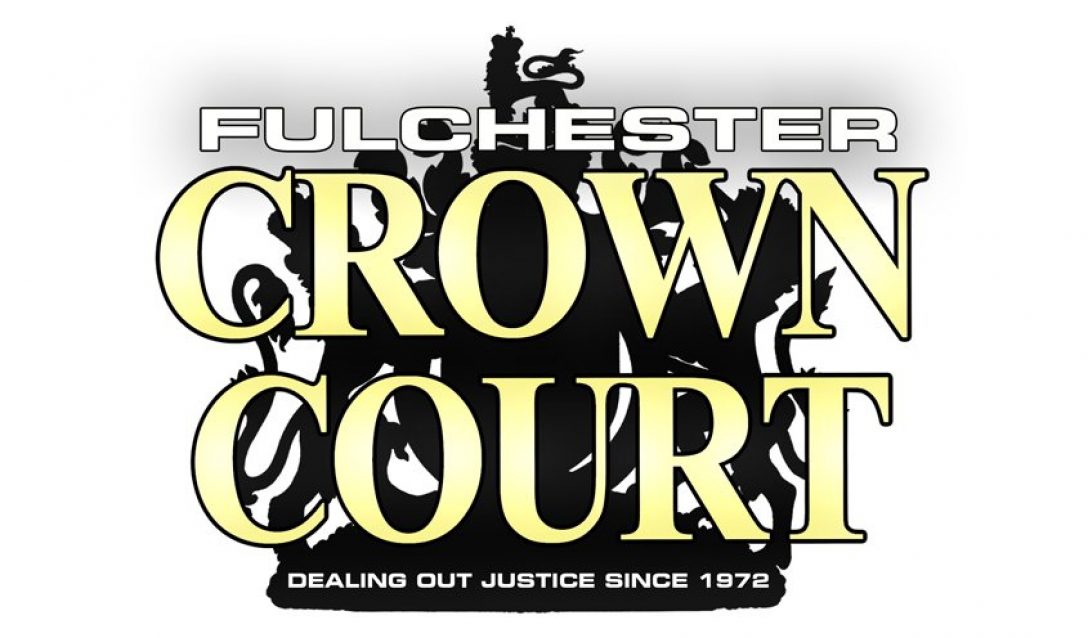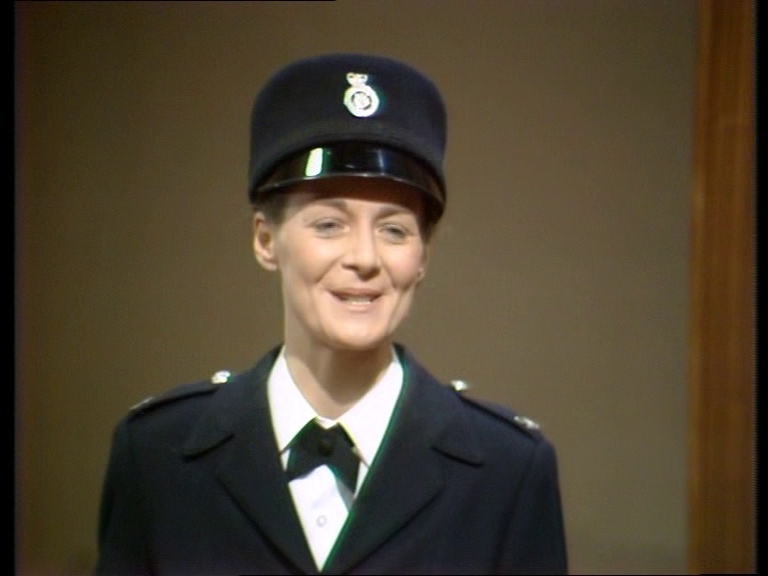The Lion of Katanga, they once called him. George Clement, ex-planter, ex-Congo mercenary leader. One of Tshombe’s generals, he led a motley collection of adventurers in the Congo uprising. He fought his way to Rwanda, was repatriated to Belgium, and finally settled in England, in Fulchester, where he married. But the Lion couldn’t forget his old ways, and today he finds himself in Fulchester Crown Court, charged with treason.
Original broadcast: Wednesday 19 – Friday 21 September 1973
Written by: David Fisher
The last case written by David Fisher was Case 43: The Night for Country Dancing
Directed by: Alan Bromly
This is Alan Bromly’s second Crown Court assignment. His first was ages ago: Case 3: R v Bryant
Presiding: John Horsley (1920-2014) as Mr Justice Mowbray

It’s always exciting to see a brand new judge, and Mr Justice Mowbray will prove one of Crown Court‘s longest lasting, popping up intermittently until the show’s penultimate series in 1983. Like fellow Crown Court judge John Barron, John Horsley’s best known role was in the BBC’s Reginald Perrin series: he played Doc Morrissey in both the original 70s Fall and Rise series and the Reggie-free 1996 follow-up The Legacy of Reginald Perrin. In the 1950s he was a sterling lead in many low budget British films, and a supporting player in lots of more prestigious ones, and after that became ubiquitous as a TV character actor.
The accused: Neil Hallett (1924-2004) as George Clement

Hawk-faced Neil Hallett’s accent as George Clement may not seem the most convincing ever committed to videotape, but he was himself actually born in Belgium. A dependable second lead in 60s crime series like Ghost Squad and The Informer, his screen career was kept going through the 70s thanks to his willingness to appear in a succession of softcore movies, and occasionally get his kit off in them: Groupie Girl (1970), Fun and Games (1971), Virgin Witch (1972), Can You Keep It Up for a Week? (1974) and Keep It Up Downstairs (1975), most of them scripted by his close friend Hazel Adair, co-creator of Crossroads. In 1985 he appeared, to no great distinction, in the Doctor Who story Timelash.
Appearing for the prosecution: Richard Wilson as Jeremy Parsons QC

Jeremy Parsons was last seen in Case 48: Public Lives, as was this weeks defence counsel:
Appearing for the defence: David Ashford as Charles Lotterby

Witnesses for the prosecution:
Michael Elphick (1946-2002) as Simon Chase

It’s the Crown Court debut of Private Schultz and Boon star Michael Elphick, who’ll later make numerous appearances as Cockney barrister Neville Griffiths QC. And yes, he does look astonishingly like TV’s Matt Berry here.
Victor Brooks (1918-2000) as Detective Chief Superintendent Alwyn Lane

Of COURSE Victor Brooks is playing a policeman, that was his thing. In a screen career of nearly 40 years his roles as members of the force vastly outnumber the others. He helped define the square, stolid, grey figure of the dogged police inspector for generations.
Witnesses for the defence:
Jacob Witkin (1938-2016) as Arnold Parker

South African by birth, Jacob Witkin had a decent career in British films and TV in the 70s and 80s (his roles included Diana Dors’ werewolf husband in Hammer House of Horror). In the 90s he moved to Hollywood and rapidly became a go-to for old bearded men bit parts. As such he is, magnificently enough, the only actor to appear in both CrownCourt and Paul Verhoeven’s Showgirls.
Sonia Graham (1929-2018) as Margaret Clement

A star of the BBC’s 60s soap Compact, Sonia Graham’s recent TV roles had included a perplexed mother in the ATV children’s drama Escape into Night (a role she’d essentially repeat in the 1976 BBC sci-fi series The Changes) and a kindly aristocrat in the BBC children’s drama Thursday’s Child. She’d go on to have regular roles in Within These Walls and (much later) London’s Burning
The jury:




A decent selection this week: the gentleman who looks like Hywel Bennett sat next to the lady who looks like George Layton, the very stern elderly man sat next to the sweetly smiling throughout elderly lady (they MUST be a couple, surely?), the tiny Mary Whitehouse styled elderly lady who remains slumped against the end of the bench throughout. Unusually, though, the foreman is the highlight this week. His name’s Stanley Dawson, he had a decent career as a bit part player (in recent months viewers could have seen him in Shabby Tiger, Sam and the BBC’s Jack the Ripper), and he’ll later return to Crown Court in an actual speaking role TWICE. The most important thing, though, is how much he uncannily looks like Chris Morris playing Bamber Gascoigne.

The verdict (highlight to reveal): Guilty
Case notes:
- This week’s Crown Court is heaven for anyone interested in 70s technology, with many lingering shots of old TVs and reel-to-reel tape recorders.




- Fulchester geography: we learn this week that there are moors surrounding Fulchester, on which the Clements ran a hotel.
- Signs of the times: Congo’s revolutionary struggles of the 60s are much referred to in dialogue, and indeed revolutions in far off countries are something British viewers of the 70s would have been well used to hearing about. An even more wildly 70s detail is that audio engineer Arnold Parker lives in an anarchist commune.
Summing up:
Well. Go away if you don’t like spoilers because it’s impossible to discuss Treason without mentioning what makes it grimly unique among Crown Court cases: it’s the only one that ends with the defendant being condemned to death. In 1973 treason was the only offence it was still possible to be executed for under English law (though nobody actually was), and it seems pretty obvious that this is the whole reason these episodes exist (even though the death penalty as punishment for treason isn’t even mentioned until the final stages). The case is mostly pretty dreary and the conclusion is absurd: the idea that in 1973 George Clement would be executed for the offences he’s on trial for here is utterly ridiculous. But the thing that most irks me is that John Horsley (perfectly acceptable as a Crown Court judge but obviously nowhere near the William Mervyn league) gets, in his first appearance, to be the only judge on the show to don the black cap. Sorry, but I think that’s something you need to pay your dues for.
































































































































